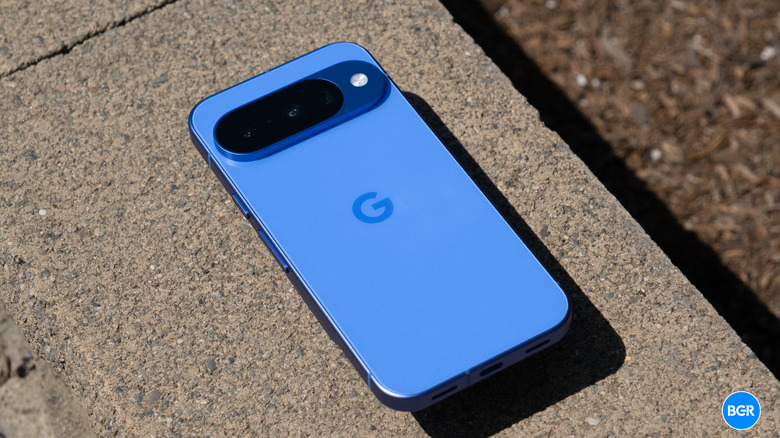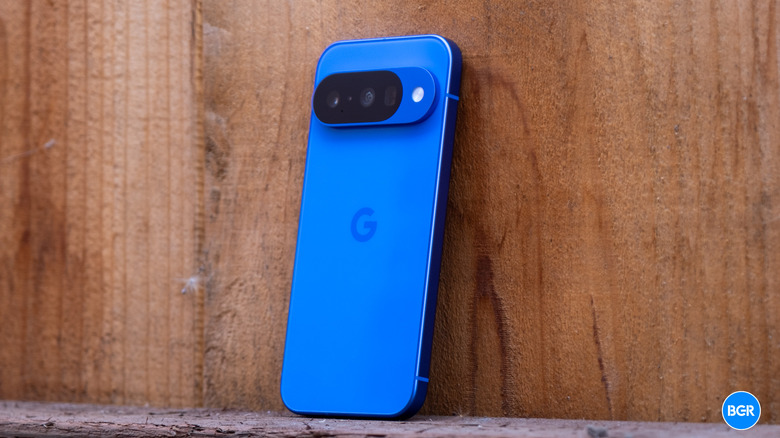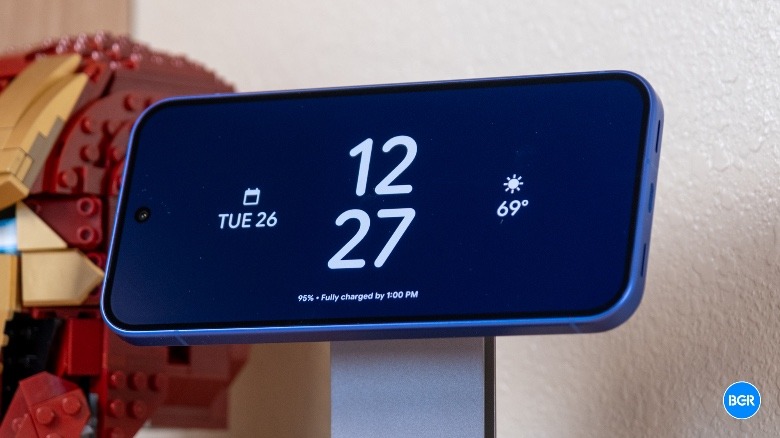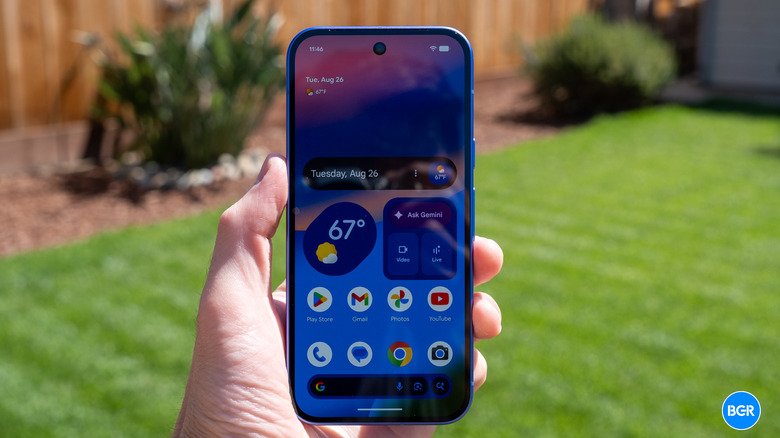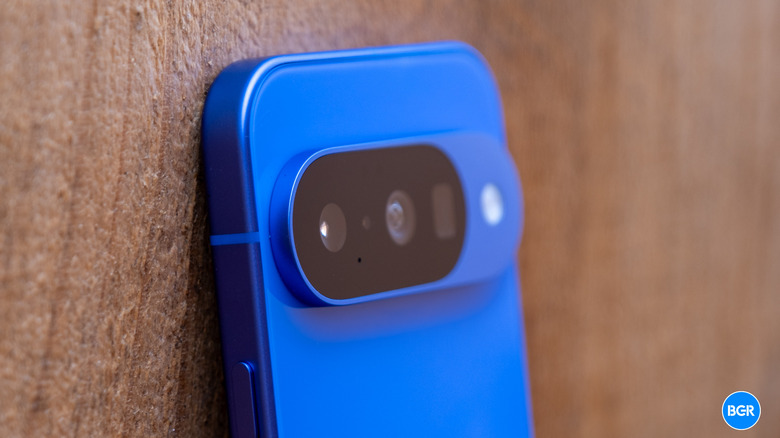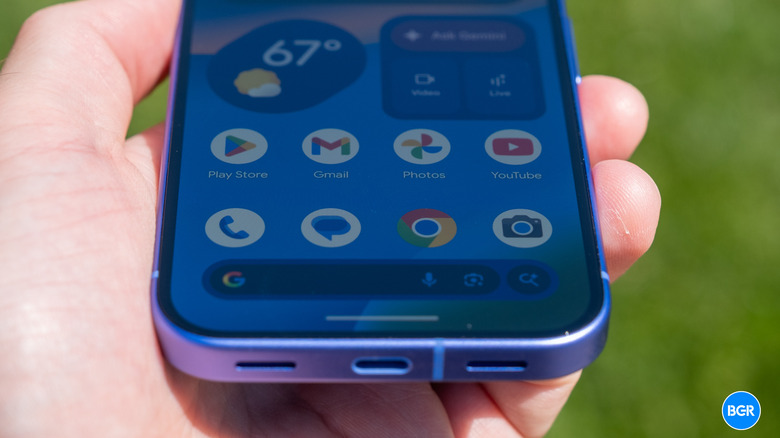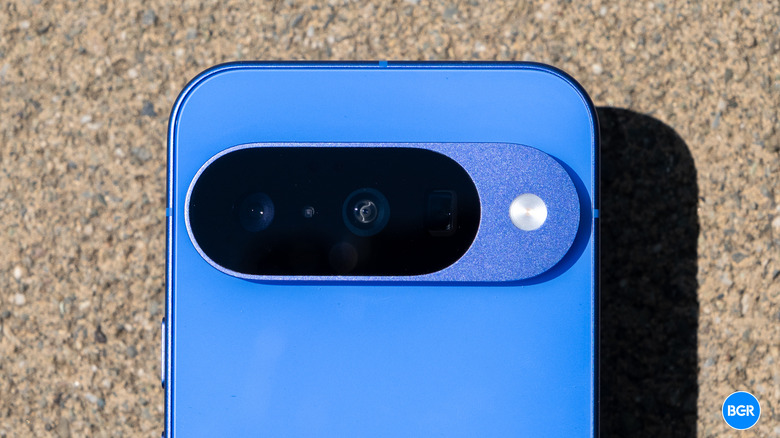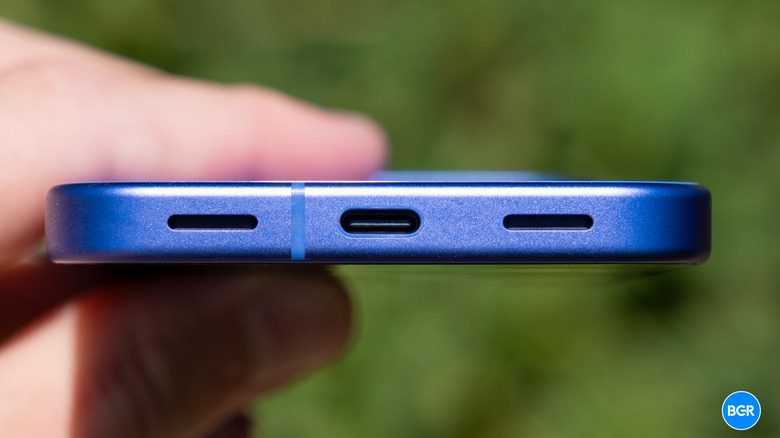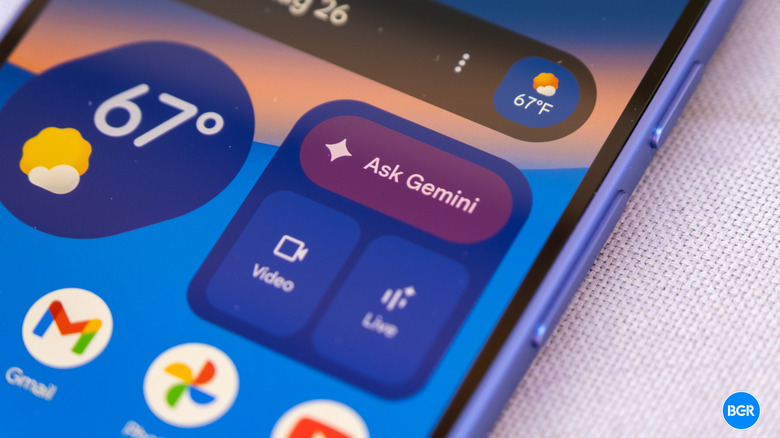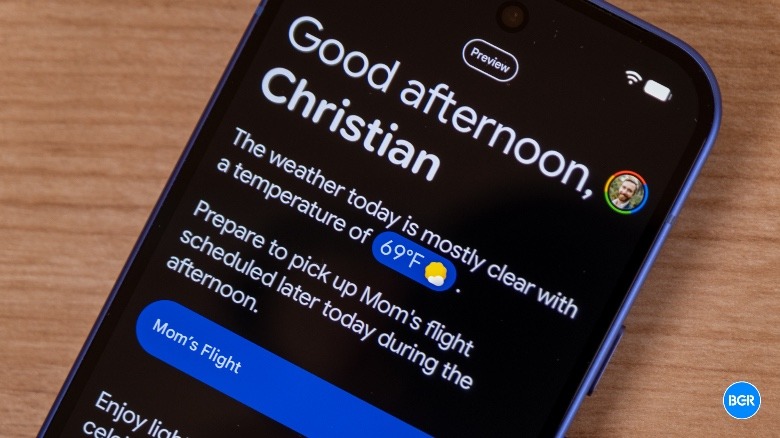Google Pixel 10 Review: Android Users Finally Have Their iPhone
Google is pulling out all the stops. On paper, the Google Pixel 10 is seemingly purpose-built to satisfy the complaints of Pixel 9 reviewers around the world, adding features like magnetic charging, a better chip under the hood, and even a third camera.
When I look back at Pixel 9 reviews, it's hard to imagine what else Google could have added in the Pixel 10. But are these changes just surface level? Is the Google Pixel 10 really the ultimate Android phone in its price range? And perhaps more importantly, is it the Android phone that iPhone users have been waiting for?
Turns out, in a not-so-surprising twist, Google may well know exactly what Android users want — and they want the Pixel 10.
Google Pixel 10 design
One thing that I'm glad Google didn't change for the Pixel 10 is the overall design. The design of the Pixel 9 series was stunning, with a premium, high-quality build, comfortable feel, and a unique look — and all of that is back for the Pixel 10. Sure, many of the Pixel series' design elements may have been ripped straight from the iPhone, but there's nothing wrong with that when the iPhone's design is still often considered to lead the industry. After all, even Samsung took design cues from the iPhone for the Galaxy S25 series.
Everything from the shape of the frame to the colors gives the Pixel 10 a premium yet unique look. The frame has rounded edges that make the phone ultra comfortable to hold, along with a minimalist back that only has the Google logo. On the bottom of the device can be found a USB-C port, while on the right edge are the power button and volume rocker.
I even quite like the camera bar. All flagship phones have large camera modules these days, but the horizontal alignment of them means that the phone avoids rocking on the table when you tap the screen. That's something that very few other top-tier phones avoid.
The Pixel 10 comes in a few different colors, including Indigo, Frost, Lemongrass, and Obsidian. In layman's terms, that basically translates to blue, off-white, neon yellow, and black. I have the Indigo model, and I love the look. It is indeed very, very blue, but I'm a fan of colorful tech. And, of course, if you're not, you don't have to buy the Indigo — there's a black model for fans of more subtle colors.
The phone is built from reasonably premium materials, though it doesn't feel as high-quality as the Pixel 10 Pro. On the front and back of the device you'll get Gorilla Glass Victus 2, which is held together by an aluminum frame. Unlike the Pro phones, the Pixel 10 has a glossy back, and it does pick up fingerprints reasonably easily. It's not a huge deal, though — all phones pick up fingerprints, and it wasn't necessarily over the top.
There are other areas in which the Pixel 10 excels in feel. While it's not necessarily fully design-related, the Pixel series has long offered excellent haptic feedback compared to its Android competitors. This is an area that the iPhone has been head and shoulders above the competition for many, many years, but the Pixel series has largely closed the gap. That haptic feedback plays into the experience more than ever this time around. For example, you'll feel it when you slide the brightness adjuster, and of course, you'll feel it when you type on the keyboard — though I prefer the iPhone's slightly more subtle typing feel.
All that to say, the design of the Google Pixel 10 is excellent. Between the combination of look and feel, the Pixel series remains my favorite when it comes to the design of Android phones.
Google Pixel 10 display
On the front of the Pixel 10 can be found a 6.3-inch display with a 1080p resolution. It's an OLED screen, but it's not an LTPO OLED, like the Pixel 10 Pro. That means that while its refresh rate can range between 60Hz and 120Hz, it can't go all the way down to 1Hz. That doesn't impact how the screen actually looks, though. It just plays a role in how much battery it uses up.
The display looks stunning. It's smooth to the touch and gets incredibly bright with a peak brightness of up to 3,000 nits (or 2,000 nits when viewing HDR content). Images are colorful and vibrant, and text is nice and crisp. I found it easy to see content on the screen even outdoors in direct sunlight, and beyond that, I never felt the need to pump up the brightness of the display.
Yes, the display is one area in which the Pixel 10 could be slightly better in the form of an LTPO OLED screen instead of the standard OLED that it has now, but in terms of how the display actually looks, you couldn't really wish for much more. Sure, the resolution isn't quite as high as the Pixel 10 Pro, but it's still more than high enough, and I never found myself wishing the device had more pixels than it currently has.
Google Pixel 10 performance
Performance is another area that Google says it has made big improvements for the Pixel 10. That's long overdue. Performance on the Pixel series has always been good enough, and to be clear, I've always found the devices to have the power for everything I need. However, that doesn't mean that they have kept up with the competition, and the Tensor series has never been able to compete with Apple's A-series chips or Qualcomm's latest and greatest Snapdragon chips. For the Tensor G5, Google has switched to TSMC on the latest 3nm process — which is the same as Apple's A18 Pro chip and the Qualcomm Snapdragon 8 Elite. The Tensor G5 is coupled with 12GB of RAM and either 128GB or 256GB of storage.
So, has Google fixed the Tensor series for the Pixel 10? Well, it has made improvements — but the Tensor G5 still can't quite keep up with the competition, at least as far as benchmarks are concerned. Both Apple's A18 Pro and the Qualcomm Snapdragon 8 Elite both handily beat the Tensor G5 in raw numbers — and both of those chips are about to be replaced with even better ones.
The question isn't whether or not the Tensor is as powerful as the competitors, though. It's whether or not it really matters. Here are the facts: the Pixel 10 was smooth and powerful the entire time I used it. It never stuttered or lagged even during heavy multitasking and intensive mobile gaming sessions. It may not have as much performance headroom as the others, meaning that it might start to slow down more quickly as apps and software get more demanding. But it's entirely possible that it won't, especially given the fact that Google is able to integrate software and hardware seamlessly — seemingly almost as well as Apple.
And the CPU is really only part of the story when it comes to a chip's performance anyway, especially in the modern era. Google is making a big play into AI, and it says that the Tensor G5 offers a 60% more powerful Tensor Processing Unit (TPU) compared to the Tensor G4. That helps improve and enable AI-based features like those built into the camera and Gemini.
Google Pixel 10 speakers
Google has been highlighting improved speakers in the Pixel 10 Pro and 10 Pro XL, but it's still worth talking about the speakers built into the Pixel 10. They sound very good, getting nice and loud and offering a decent amount of depth. They obviously won't replace a decent pair of headphones, and don't expect much bass, given their size. But you should expect the Pixel 10 to deliver better audio than the vast majority of other phones in a similar price range.
Compared to the iPhone 16, I found the Pixel 10 to offer solid speakers overall. The iPhone speakers offered a little more detail in the high end and slightly more bass, but they also distorted at louder volumes where the Pixel 10 speakers didn't. They reached a similar max volume as well. Clearly, both of these phones offer excellent speakers, but neither of them offers speakers that are good enough to replace headphones. They'll work in a pinch, though.
Google Pixel 10 camera
The camera is perhaps the biggest area of improvement for Google. Why? Well, the Pixel 10 has a triple camera array, a feature that has so far largely been reserved for higher-end phones in a series. On the Pixel 10, you'll find a 48-megapixel main camera, a 10.8-megapixel telephoto camera with 5x optical zoom, and a 13-megapixel ultrawide camera with a 120-degree field of view. That's right — the base Pixel 10 has the big three camera options, making it more versatile than the vast majority of others in its price range.
There are some caveats to the updates, though. Unfortunately, it seems as though adding a telephoto lens meant cutting costs on the other two cameras, downgrading them compared to the Pixel 9. While the main camera on the Pixel 9 had a 1/1.3-inch sensor, the Pixel 10 instead has a 1/2-inch sensor. And, as mentioned, the ultrawide camera is 13 megapixels, down from the 48-megapixel camera that was found on the Pixel 9 before it.
On the one hand, I understand the changes. Before, the telephoto camera was the major camera upgrade for Pro-level phones, so it didn't matter as much if the other two cameras were the same across the entire lineup. But I still can't help but feel a little weird about the Pixel 10 downgrading some features compared to the Pixel 9.
In general use, though, you won't notice any downgrade in camera quality, even if you've used the Pixel 9 for the past year. In some use cases, you can see a little less depth in the photo due to the smaller main camera sensor, and in low lighting, the phone wasn't able to capture quite as much detail when using the main and ultrawide cameras. That's not to say low-light photography wasn't good — I still found the Pixel 10 to perform better than the Galaxy S25, and it certainly made a darker scene look brighter and more vibrant. But the Pixel 9 captured better low-light images, while the iPhone 16 beat all three (Pixel 9, Pixel 10, and Galaxy S25) of the others.
I actually found the Pixel 9 to take better photos than the Pixel 10 when zoomed in on low-light scenes. To be fair, that started to change at much higher levels of zoom, where both phones produced pretty illegible images. The Pixel 10 can also zoom further than the Pixel 9, but at 5x zoom or so, the Pixel 9's low-light images were better — again, likely due to the fact that it relied more on the larger sensor of the main camera.
In good lighting, zoomed images were better on the Pixel 10, though. The Pixel 9 can only zoom to up to 8x, and actually produces great results at this level of zoom despite the lack of telephoto camera. But the Pixel 10's images were slightly more detailed. Of course, the Pixel 10 can also zoom further — up to 20x. Even at that level, images were pretty good. Google's image processing for zoomed photos has long been among the best, and that remains true even on the base Pixel 10, and even without the Pixel 10 Pro's new generative AI-based Pro Res Zoom feature.
On the front of the phone is a 10.5-megapixel selfie camera, and it produced solid results overall. It was able to capture enough detail even in challenging scenarios, like with the sun directly behind me — though it did struggle with lens flare a bit.
Where does this leave the Pixel 10's camera array overall? I'm glad Google added the telephoto camera, even if it meant slightly reducing the quality of images captured by the ultrawide and main cameras. You'll still get an excellent camera, and it's on-par with the Galaxy S25, or better in some situations, like low-light photography, and on par with the iPhone 16 in all but zoomed images, where it's better.
AI editing
There are many AI-based camera features built into the Pixel 10 as well. For example, there's the new Camera Coach feature, which is designed to look at a scene through the camera and guide you towards taking a better shot. It does so by analyzing the scene using AI then generating instructions tailored to that specific scene. These suggestions can be related to framing, lighting, and basic composition of the photo. All but the most basic smartphone photographers will probably turn it off. That said, I can imagine it being handy for those who want to improve their smartphone photography.
There are also new text-based editing tools. These allow you to describe how you want to edit a photo using natural language instead of having to learn all the different settings. It's a neat idea and actually produced some pretty solid results. For example, I was able to easily add a pair of sunglasses to an Iron Man Lego head that I have — and while it added reflections in the sunglasses that wouldn't have been there in real life, those reflections made it look more natural than it would have if they weren't there.
Other features are still available from previous generations, but Google says they'll work better on the Pixel 10. One example of this is Add Me, which is supposed to be more reliable with larger groups and even work with pets. And there's a new automatic Best Take feature, which will have the camera automatically take multiple images and pick frames to blend together for the best photo overall. You can turn this feature off if you don't like the results.
Finally, there are some camera features that aren't on the Pixel 10, instead being reserved for the Pixel 10 Pro. An example of this is the Pro Res Zoom feature that uses generative AI to enhance the details of a shot. You won't get that on the base Pixel 10, but I'll go in-depth on it in my Pixel 10 Pro review.
Google Pixel 10 battery and charging
The Google Pixel 10 is powered by a 4,970mAh battery, which is fairly large. The battery life is pretty good. It's not incredible, but I was still easily able to get it through a full day, and while it's probably not a two-day phone for me, lighter users may be able to get there. Google has been touting the Pixel 10 as being much more efficient than the Pixel 9, and while the battery life may be slightly better, I'm not sure it's dramatically better. That's not a huge issue — the Pixel 9's battery was good enough, and so is the Pixel 10's.
Actual battery performance is only one part of the equation, though, with charging being the other. Thankfully, this is an area where the Pixel series as a whole gets some big improvements. With a wired connection, the Pixel 10 offers 30W charging, which is fine. It's not massive, and I hope Google starts improving on this for future Pixel phones — but most will be perfectly happy with the wired charging speeds.
The improvements come in the form of wireless charging. The Pixel 10 is one of the first Android phones to offer full Qi2 compatibility. On top of 15W wireless charging speeds, Qi2 compatibility means that the Pixel 10 supports magnetic accessories like charging stands, wallets, and so on. Yes, that's native Qi2 support, with or without a case. Finally. MagSafe is one of my favorite things about the iPhone. Whenever I'm at my desk, my iPhone is usually attached to a MagSafe charging stand, where it's easy to see notifications as they come in and keep my device charged up all the time. I can only hope that other Android manufacturers follow suit. No more of this "Qi2-ready" nonsense, please.
Google PIxel 10 software
The Pixel series has long offered what I consider to be the best software experience you can get on any Android device, and that continues with the Pixel 10. Everything about the look and feel of the Pixel's Android skin is polished, refined, and...fun. It's colorful and smooth, and while it's a far cry from the so-called "stock Android" experience that Pixel phones used to offer, it's all the better for it.
There are plenty of ways in which the Pixel software is better than most. For starters, you'll get Google's excellent home screen widgets, touches like haptic feedback when you control sliders like brightness and volume, and more.
As you would expect, AI once again a top priority for Google. The Pixel 10 comes with Gemini, of course, which is your assistant for finding information from the web and controlling your device via voice. Gemini works quite well, and has improved significantly over the last year. Case in point, Gemini Live's voices are more natural, and Gemini has even more functionality, like the ability to share live video.
But the AI-based software features go far beyond Gemini and the aforementioned camera features. For example, there's a new AI-generated voice feature for translations. Previously, there was a real-time translation feature that generated audio after translating it in a phone call, but now this feature will generate an AI version of your voice to be played to the other person on the call and the other person's voice, which you'll hear.
Google is also taking a page out of Samsung's book with the new Daily Hub feature, which is Google's version of Samsung's Now Brief. Daily Hub is a little more subtle, showing up in the At a Glance widget and Discover feed instead of persistently on the lock screen and in notifications. The feature worked fine, though it didn't update automatically through the day — so minor changes in weather meant that the Daily Hub on my Pixel 10 Pro was slightly different than the one on my Pixel 10, and new Calendar events didn't show up. If you use it frequently, it's worth remembering to swipe down to update it manually.
Last but not least is Magic Cue, which is designed to suggest information you might need based on what you're doing on your phone. The example Google gives is getting a message asking for the address for a dinner with your friend and having your device automatically pop up the address that you can send over based on calendar information. I wasn't able to get it to work on my review unit, though I'm confident my issues will be fixed ahead of the phone's actual release.
Unfortunately, unlike the Pixel 10 Pro and Pixel 10 Pro XL, the base Pixel 10 doesn't come with a Google AI Pro subscription. Google says that the Pixel 10 will get seven years of software updates, which is pretty impressive. Android phones in general have come a long way over the past few years when it comes to software support — and Google has been leading the charge. At this point, the Pixel is about on par with the iPhone, though Google obviously has yet to actually live up to those promises just yet, since it only started offering seven years of support with the Pixel 8 series in 2023.
Conclusions
With more or less the same design as last year, you might assume that the Pixel 10 is more of the same. It's not. Sure, the Tensor G5 isn't the competitive performance-focused chipset that some might have wanted, but pretty much everything else about the phone is an upgrade. Even better is the fact that most of those changes are noticeable to tech nerds and basic phone users alike. Full Qi2 support unlocks a whole ecosystem of accessories and chargers, while a telephoto camera means that those who pull their phone out and pinch to frame the shot will simply get better photos. It's easy to recommend the Pixel 10.
The competition
The biggest competition to the Pixel 10 comes from the Galaxy S25 and iPhone 16. Both devices offer better performance than the Pixel 10, but the camera system on the Pixel 10 is more versatile than both.
If you're deciding between the iPhone 16 and Pixel 10, you are one in a million, but the same differences that have always existed still exist. Do you want iOS or Android? That's a discussion for a different review. The actual hardware experience is pretty similar, though. They both have Qi2 support, they both have a premium design, and they both have great speakers and a battery that should get you through the day.
I prefer the Pixel 10 over the Galaxy S25. The Pixel 10, as mentioned, has a more versatile camera, a smoother software experience, and an approach to AI features like Daily Hub that I think is a bit less in-your-face, and simply there for users who actually want to use those features. If pure performance numbers matter to you, the Galaxy S25 is still the winner — but I think that the ways the Pixel 10 is better than the Galaxy S25 makes it the way to go.
Should I buy the Google Pixel 10?
Yes. It's my favorite Android phone in this price range.
